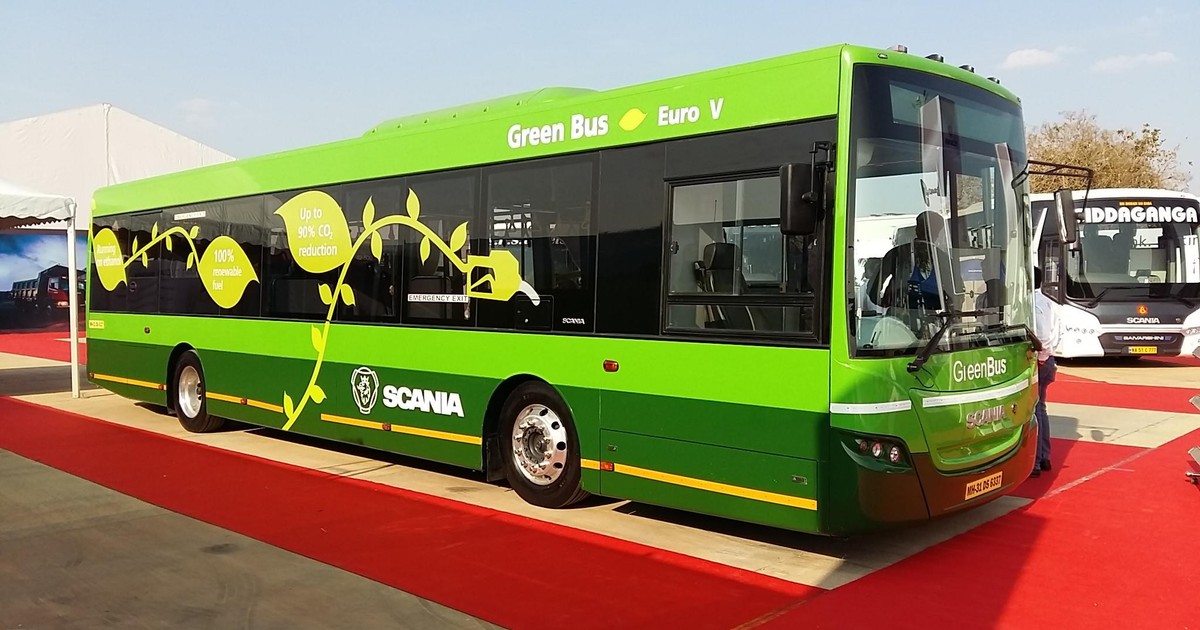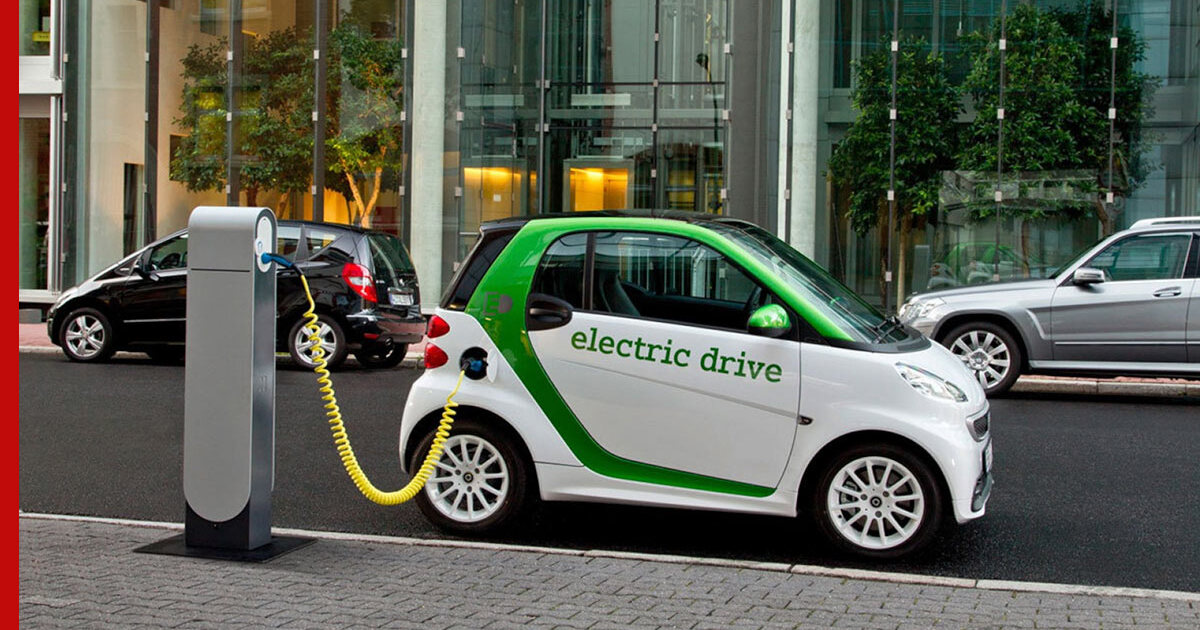Eco-Friendly Transportation Trends: Navigating Sustainable Mobility Solutions
Eco-Friendly Transportation Trends in today’s rapidly evolving world, the importance of sustainable transportation cannot be overstated. Our ever-growing awareness of environmental concerns, the need for more efficient and cost-effective travel, and a desire for a better quality of life have driven remarkable innovations in the realm of mobility. In this article, we’ll explore these transformations in the world of transportation, delving into the heart of eco-friendly trends and sustainable solutions. So, fasten your seatbelts, or perhaps in this context, tie your shoelaces, as we embark on a journey through the sustainable mobility landscape.

Electric Vehicles (EVs) Revolution
The Rise of Electric Cars
Electric cars have risen from being a niche curiosity to the forefront of personal transportation. Gone are the days when these vehicles were seen as a futuristic novelty – today, they’re a practical and environmentally conscious choice for many.
Electric vehicles have addressed several key concerns in the automotive industry:
Environmentally Friendly
Electric cars significantly reduce greenhouse gas emissions. With their capacity to run on clean, renewable energy, they offer an environmentally friendly mode of transportation that minimizes our carbon footprint.
Lower Operating Costs
Electric vehicles have fewer moving parts and don’t rely on expensive gasoline. This translates to significantly lower operating costs, making electric cars an economical choice in the long run.
Improved Performance
Electric vehicles provide instant torque, resulting in a smoother and more responsive driving experience. The quiet, vibration-free ride only adds to their appeal.
Overcoming EV Challenges
However, electric vehicles aren’t without their challenges. Let’s address two major concerns:
Charging Infrastructure
For electric vehicles to reach their full potential, robust and widespread charging infrastructure is essential. Governments and businesses are actively working to establish charging stations to overcome this hurdle.
Range Anxiety
The fear of running out of power, known as range anxiety, can deter some from adopting electric vehicles. Technological advancements are steadily extending the range of EVs, alleviating this concern.
The EV Market: Key Players and Innovations
As consumer interest in electric vehicles continues to grow, automakers worldwide are investing heavily in innovation. From Tesla’s groundbreaking advancements to traditional car manufacturers developing their electric offerings, the EV market is thriving.
Public Transportation Transformation
The Rebirth of Public Transit

Public transportation is experiencing a resurgence, with renewed focus on sustainability. After years of being overlooked, cities are reinvesting in their transit systems.
Advantages of Sustainable Public Transportation
Reduced Traffic Congestion
Sustainable public transportation, such as buses and trains, eases traffic congestion in urban areas, making city life more efficient for all residents.
Lower Emissions
These transportation modes also contribute to cleaner air by significantly reducing emissions. Fewer cars on the road mean less pollution.
Accessibility and Equity
A well-planned public transit system ensures that everyone, regardless of their economic situation, can access essential services and job opportunities.
Sustainable Public Transit Initiatives
In recent years, various initiatives have breathed new life into public transportation:
BRT Systems (Bus Rapid Transit)
BRT systems have revolutionized bus travel, offering faster, more efficient service with dedicated lanes, shorter waiting times, and modern amenities.
Light Rail and Trams
Light rail and trams provide an eco-friendly and convenient alternative to traditional urban transit. They are efficient, run on electricity, and often integrate well into urban environments.
Electric Buses
Electric buses are transforming public transit networks, offering a quieter and cleaner mode of transportation for both city residents and the environment.
Public-Private Partnerships in Public Transportation
Collaborations between governments and private entities are creating innovative and efficient public transportation solutions. These partnerships are helping fund and operate services that benefit all members of the community.
Active Transportation: Walking and Biking

Promoting Active Mobility
Promoting walking and biking as primary modes of transportation is essential for a sustainable future. These forms of active transportation offer several key advantages:
Improved Health and Well-being
Active transportation not only reduces our carbon footprint but also improves our health. Walking and biking contribute to a more active lifestyle and reduce the burden on healthcare systems.
Reduced Traffic
By reducing the number of cars on the road, walking and biking help alleviate traffic congestion, leading to a smoother and more enjoyable commute for everyone.
Cost-Efficient Commuting
One of the most attractive features of walking and biking is their cost efficiency. You don’t need to pay for fuel, parking, or public transportation, making them accessible and budget-friendly choices.
Infrastructure Investments: Bike Lanes and Pedestrian-Friendly Streets
Investments in dedicated bike lanes and pedestrian-friendly infrastructure are essential for encouraging active mobility. Well-planned urban designs and safer streets create an environment where walking and biking are not just possible but also convenient.
Community Initiatives for Promoting Walking and Biking
Community-driven efforts, such as biking clubs, pedestrian advocacy groups, and education programs, play a significant role in promoting walking and biking as viable transportation options. By creating a sense of community and advocating for better infrastructure, these initiatives make active mobility more accessible and enjoyable.
Sustainable Urban Planning
Smart Cities and Sustainable Mobility
In our quest for sustainable transportation, the concept of smart cities has taken center stage. These cities leverage technology to enhance efficiency, sustainability, and the overall quality of life for residents. Sustainable mobility plays a pivotal role in shaping these cities.
The Role of Urban Planning
Sustainable urban planning focuses on creating cities that are designed for people, not just cars. This involves various strategies:
Mixed-Use Developments
Imagine living in a neighborhood where you can walk from your home to work, visit a nearby park, and enjoy a leisurely dinner at a local restaurant, all within a few blocks. This is the essence of mixed-use developments. By blending residential, commercial, and recreational spaces, these developments reduce the need for long commutes, thus decreasing traffic congestion and carbon emissions.
Walkable Neighborhoods
Creating walkable neighborhoods involves designing cities with a strong emphasis on pedestrians. Sidewalks, safe street crossings, and close proximity to essential services such as grocery stores, schools, and healthcare facilities make walking a viable transportation option. Walkable neighborhoods promote physical activity, reduce pollution, and foster a sense of community.
Transit-Oriented Development (TOD)
Transit-oriented development encourages communities to grow around public transit hubs. This strategic planning approach ensures that people have easy access to transportation options, promoting the use of public transit and reducing reliance on private vehicles. By locating homes, businesses, and amenities near transit stations, TOD contributes to eco-friendly and efficient urban living.
Redesigning Cities for People, Not Cars
As we shift from car-centric to people-centric urban planning, cities are undergoing transformative redesigns. This approach entails creating green spaces, expanding pedestrian areas, and prioritizing sustainable transportation modes such as biking, walking, and public transit. These efforts create a more inviting and ecologically responsible urban environment.
The Sharing Economy and Transportation

Car-Sharing Services
Car-sharing services have revolutionized the way we think about vehicle ownership. Companies like Zipcar and Turo allow individuals to access vehicles when needed, reducing the need for private car ownership. This shared approach to transportation reduces the number of vehicles on the road, leading to decreased emissions and less traffic congestion.
Bike Sharing Programs
Bike-sharing programs offer an eco-friendly and convenient means of transportation in urban environments. These programs provide access to bicycles for short trips, promoting active mobility while reducing reliance on cars. Users can pick up a bike at one location and drop it off at another, making it a sustainable and flexible choice for urban commuters.
Ride-Sharing and Sustainable Commuting
Ride-sharing services, such as Uber and Lyft, are promoting carpooling and reducing the number of vehicles on the road. By connecting drivers and passengers headed in the same direction, these services optimize vehicle usage and lower carbon emissions.
The Intersection of Shared Mobility and Sustainability
The sharing economy and sustainability are converging, presenting unique opportunities for eco-friendly transportation. The ability to access vehicles, bikes, and rides when needed reduces the overall number of vehicles on the road, leading to reduced traffic, pollution, and urban congestion.
Sustainable Aviation

Electric and Hybrid Aircraft
Aviation is taking a leap into a greener future with electric and hybrid aircraft. These innovations promise to reduce carbon emissions and noise pollution, making air travel more environmentally friendly. Electric aircraft are not only more efficient but also quieter, leading to more pleasant flying experiences.
Sustainable Fuels for Aviation
The aviation industry is also exploring sustainable fuels. Sustainable aviation fuels (SAF) are derived from renewable sources and can replace traditional jet fuels. These fuels are less carbon-intensive and have the potential to significantly reduce the environmental impact of air travel.
Airport Sustainability Efforts
Airports are making strides toward sustainability. From installing solar panels and utilizing energy-efficient architecture to embracing green initiatives, airports are actively contributing to a more eco-friendly aviation sector.
The Future of Air Travel: Balancing Convenience and Environmental Responsibility
Balancing the convenience of air travel with environmental responsibility remains a challenge. The aviation industry is on a quest to create sustainable solutions that provide efficient and affordable air travel while minimizing the environmental footprint.
In the next section, we’ll delve into emerging technologies, including the high-speed Hyperloop and autonomous vehicles, and explore how they’re changing the landscape of sustainable transportation. These innovations promise to revolutionize the way we move and have the potential to address various ecological challenges.
Emerging Technologies: Hyperloop and Autonomous Vehicles
Hyperloop: High-Speed, Low-Emissions Transportation
Imagine traveling at incredible speeds, virtually emissions-free. The hyperloop promises just that. This innovative form of transportation utilizes low-pressure tubes to propel pods at high speeds, reducing travel times and emissions. Hyperloop technology is being developed with sustainability in mind, aiming to revolutionize long-distance travel.
Autonomous Vehicles (AVs): A Sustainable Revolution?
Autonomous vehicles have the potential to transform transportation in countless ways. These self-driving cars are designed to optimize traffic flow, reduce congestion, and enhance safety. However, their true sustainability impact depends on factors such as energy source, shared usage, and urban planning. AVs can significantly reduce emissions, but realizing their full potential requires addressing challenges and maximizing opportunities.
Challenges and Opportunities with AVs and Hyperloop
Implementing AVs and hyperloop technology poses unique challenges. Safety and regulation are paramount for autonomous vehicles, while the hyperloop’s infrastructure and logistical complexities must be overcome. Navigating these obstacles requires collaboration among governments, industries, and technology providers.
In the next section, we’ll examine the critical role of government policies in encouraging eco-friendly transportation, from subsidies and incentives to carbon pricing and emissions regulations. Government support is instrumental in steering transportation toward sustainability.
The Role of Government Policies
Encouraging Eco-Friendly Transportation
Government policies play a pivotal role in incentivizing sustainable transportation choices. From local initiatives to national strategies, governments worldwide are taking steps to promote green mobility.
Subsidies and Incentives for Green Mobility
Financial incentives make eco-friendly transportation options more appealing. These incentives may include tax breaks for electric vehicle purchasers, subsidies for public transit, or grants for the development of sustainable transportation infrastructure. By reducing the financial burden on individuals and businesses, governments encourage the adoption of eco-friendly options.
Carbon Pricing and Emissions Regulations
Policies regulating emissions and carbon pricing are driving the shift toward sustainable transportation. These mechanisms hold individuals and industries accountable for their carbon footprint, fostering a more eco-conscious approach to mobility.
Challenges in Implementing Sustainable Transportation Policies
While policies promoting sustainable transportation are essential, implementing them is not without challenges. Resistance from entrenched interests, political roadblocks, and logistical hurdles can slow down the transition to eco-friendly mobility. Overcoming these obstacles is essential for creating lasting change.
In the upcoming section, we’ll explore sustainability within the realm of freight and cargo transportation. Greening the supply chain, electric trucks and vans, and sustainable shipping and logistics are integral to reducing the environmental impact of the ever-expanding world of e-commerce.
Sustainability in Freight and Cargo
Greening the Supply Chain
Greening the supply chain is a vital component of sustainable transportation. By reducing emissions and the environmental impact of logistics, companies can make significant strides toward eco-friendliness. Sustainable supply chain practices involve efficient routing, environmentally conscious packaging, and optimized distribution.
Electric Trucks and Vans
Electric trucks and vans are transforming the freight industry. These vehicles provide a cleaner and quieter means of transportation for goods, reducing both emissions and noise pollution in urban areas.
Sustainable Shipping and Logistics
Innovations in sustainable shipping and logistics are reshaping the movement of goods. From fuel-efficient routes to zero-emissions delivery options, the logistics industry is undergoing a sustainable transformation.
Reducing the Environmental Impact of E-commerce
The growth of e-commerce has brought convenience to consumers worldwide. However, this convenience comes with an environmental cost. As the e-commerce industry expands, innovative solutions are being developed to minimize its carbon footprint, from efficient last-mile delivery to sustainable packaging.
In the next section, we’ll explore micro-mobility options like scooters and e-bikes, which are gaining popularity in urban areas, offering convenient and eco-friendly modes of transportation. Additionally, we’ll dive into innovations in fuel efficiency, including hydrogen-powered vehicles and advancements in battery technology.
Micro-Mobility: Scooters and E-Bikes
The Rise of Micro-Mobility
Micro-mobility options, such as electric scooters and e-bikes, are changing the way we navigate urban environments. These compact and electric vehicles offer flexible transportation solutions for short trips, reducing the need for personal car usage.
Benefits and Challenges of Scooters and E-Bikes
Scooters and e-bikes come with their own set of advantages and challenges. They offer affordable, eco-friendly transportation choices for urban dwellers but also face issues related to regulation and safety.
Regulations and Safety Concerns
To ensure the safety and efficiency of micro-mobility solutions, regulations are evolving. Helmets, speed limits, and designated parking areas are all part of the effort to balance the benefits of these modes of transportation with safety concerns.
Integration with Public Transit
Micro-mobility is becoming integrated with public transit systems, offering a seamless and eco-friendly travel experience. These modes of transportation can bridge the first and last-mile gap, making public transit more accessible and appealing.
Innovations in Fuel Efficiency
Hydrogen-Powered Vehicles
Hydrogen-powered vehicles are a unique approach to fuel efficiency. By utilizing hydrogen fuel cells, these vehicles produce zero emissions, emitting only water vapor as a byproduct. The development of hydrogen infrastructure is essential for the widespread adoption of this technology.
Biofuels and Sustainable Energy Sources
Biofuels, derived from renewable sources, are diversifying the options for sustainable energy in transportation. These fuels are a promising alternative to traditional gasoline and diesel, offering a more eco-friendly mode of mobility.
Advancements in Battery Technology
Advancements in battery technology are enhancing the performance and range of electric vehicles. This progress is critical for mainstream adoption, as it reduces range anxiety and increases the appeal of electric cars.
The Race for the Greenest Fuel
The pursuit of the greenest fuel source is ongoing. Different alternatives, from electricity to hydrogen to biofuels, are competing to become the primary choice for sustainable mobility. The outcome of this race will have a profound impact on the future of transportation.
In the subsequent section, we’ll explore the electrification of mass transit, from trains and trams to trolleybuses. Electrification offers a cleaner and more efficient mode of mass transportation, reducing the carbon footprint of urban centers.
Electrifying Mass Transit
Electrification of Trains and Trams
Electrifying trains and trams is an essential step toward more sustainable mass transit. Electric rail systems are cleaner and more efficient than traditional diesel engines, reducing air pollution and greenhouse gas emissions.
Trolleybuses: Combining the Best of Buses and Trains
Trolleybuses combine the flexibility of buses with the efficiency of electric rail systems. These vehicles run on overhead wires, offering a quiet and sustainable mode of transportation that can navigate city streets and dedicated lanes.
Sustainable Commuter Rail Systems
Sustainable commuter rail systems provide a greener alternative for daily commuting. These systems utilize electric power, reducing emissions and offering a more comfortable and eco-friendly experience for passengers.
The Future of Green Rail Transportation
The future of rail transportation is moving toward sustainability. Exciting possibilities are on the horizon, including faster, more efficient electric trains and trams that will shape the way we commute in urban areas.
In the next section, we’ll delve into sustainable car manufacturing, highlighting the efforts to reduce the environmental impact of the auto industry. This includes the use of recycled materials, eco-friendly factories, and ethical considerations in manufacturing processes.
Sustainable Car Manufacturing

Eco-Friendly Vehicle Production
Eco-friendly vehicle production involves reducing the environmental impact of the manufacturing process. Car manufacturers are adopting sustainable practices to minimize waste, conserve resources, and decrease their carbon footprint.
Recycled Materials and Reduced Waste
The use of recycled materials in car manufacturing reduces the demand for new resources and minimizes waste. From recycled plastics to reclaimed metals, these materials are being integrated into car design, promoting sustainability.
Eco-Friendly Car Factories
Car factories are undergoing transformations to become more eco-friendly and efficient. Green building practices, energy-efficient processes, and waste reduction measures are all part of the movement toward sustainability in auto manufacturing.
Ethical Considerations in Auto Manufacturing
Ethical considerations in auto manufacturing encompass labor practices, fair trade, and social responsibility. By addressing these aspects of the industry, auto manufacturers can contribute to a more sustainable and just global transportation sector.
In the following section, we’ll explore Mobility as a Service (MaaS), a revolutionary approach to transportation that integrates various mobility options into a single, accessible platform. We’ll also look at case studies and challenges related to its implementation.
Mobility as a Service (MaaS)
MaaS and the Future of Transportation
Mobility as a Service (MaaS) is revolutionizing the way we plan and pay for transportation. This innovative approach integrates various transportation options into a single platform, providing convenient, seamless travel experiences for users.
The Convenience of Mobility as a Service
MaaS offers unprecedented convenience by allowing users to plan, book, and pay for different modes of transportation through a single app or service. This integration simplifies travel and encourages the use of sustainable transportation options.
Case Studies in MaaS Implementation
Real-world case studies demonstrate the potential and challenges of MaaS implementation. Examining the experiences of cities and regions that have embraced this approach provides insights into its effectiveness and areas for improvement.
Addressing Challenges in MaaS
While MaaS offers numerous benefits, it also faces challenges related to technology, regulation, and user adoption. Overcoming these hurdles is essential for the widespread adoption of MaaS and its potential to transform the way we move.
In the subsequent section, we’ll explore the cultural shift toward eco-friendly transportation. Changing consumer perspectives, education and awareness campaigns, and the promotion of sustainable transportation behavior change are all essential elements in this transition.
Cultural Shift: Changing Mindsets for Eco-Friendly Transportation
Shifting Consumer Perspectives
Changing consumer attitudes are influencing the demand for eco-friendly transportation options. As more people become environmentally conscious, they seek sustainable modes of mobility.
Education and Awareness Campaigns
Educational campaigns play a vital role in creating awareness and promoting eco-friendly transportation. By informing the public about the benefits and accessibility of sustainable transportation, these campaigns inspire individuals to make eco-conscious choices.
Sustainable Transportation Behavior Change
Encouraging sustainable transportation behavior change requires a concerted effort from individuals and communities. Promoting sustainable practices, such as carpooling, public transit, biking, and walking, can significantly reduce carbon emissions and create a greener transportation landscape.
Role Models and Success Stories
Role models, whether they are individuals, organizations, or cities, have successfully embraced eco-friendly transportation, serving as examples for others to follow. Celebrating these success stories can inspire further adoption of sustainable transportation choices.
In the following section, we’ll explore the business case for eco-friendly transportation. Businesses are increasingly recognizing the financial benefits of eco-conscious choices, which include cost savings, attracting eco-conscious customers, and enhancing corporate social responsibility.
The Business Case for Eco-Friendly Transportation
Cost Savings and Efficiency
Businesses are recognizing the financial benefits of eco-friendly transportation choices. These choices, including electric fleets and efficient supply chain practices, reduce operational costs and enhance profitability.
Attracting Eco-Conscious Customers
Eco-friendly transportation can attract a loyal customer base seeking sustainable solutions. Companies that prioritize sustainability often find themselves more appealing to consumers who share these values.
Enhancing Corporate Social Responsibility (CSR)
Incorporating eco-friendly transportation options aligns with corporate social responsibility goals. Companies can demonstrate their commitment to environmental stewardship and social responsibility by adopting sustainable transportation practices.
A Competitive Advantage
Companies that prioritize eco-friendly transportation gain a competitive edge in the market. As consumers become more eco-conscious, businesses that offer sustainable transportation options have a unique selling point that sets them apart from competitors.
In the next section, we’ll delve into environmental impact assessment, exploring how we can measure the sustainability of transportation and set emissions reduction targets to achieve greener modes of mobility.
Environmental Impact Assessment
Measuring the Sustainability of Transportation
Evaluating the environmental impact of transportation is crucial for shaping more sustainable policies and practices. Environmental impact assessments help identify areas for improvement and inform decision-making.
Emissions Reduction Targets
Setting targets for emissions reduction is key to achieving a greener transportation sector. These targets guide policy development and industry initiatives aimed at reducing the carbon footprint of transportation.
Tracking Progress Towards Sustainable Mobility
Regular assessments and reporting are essential for measuring progress toward sustainable mobility. Tracking key performance indicators allows stakeholders to determine the effectiveness of sustainability initiatives and make necessary adjustments.
Sustainable Transportation Metrics
Developing meaningful metrics is essential for assessing and improving sustainability in transportation. Metrics related to emissions, energy efficiency, and accessibility provide valuable insights into the sustainability of transportation systems.
In the next section, we’ll explore global initiatives and agreements that are driving nations and organizations to embrace sustainable transportation practices. These include the Paris Agreement, United Nations Sustainable Development Goals, and international collaborations in sustainable mobility.
Global Initiatives and Agreements
The Paris Agreement and Sustainable Transportation
Global agreements like the Paris Agreement are driving nations to embrace sustainable transportation practices. The agreement focuses on reducing greenhouse gas emissions and limiting global warming. Sustainable transportation plays a vital role in achieving these targets.
United Nations Sustainable Development Goals
The United Nations Sustainable Development Goals include targets related to transportation sustainability. These goals aim to create a more equitable, prosperous, and environmentally responsible world by addressing various aspects of sustainable development, including transportation.
International Collaborations in Sustainable Mobility
Collaboration among countries and organizations is essential in advancing global sustainable transportation efforts. By sharing knowledge, expertise, and resources, nations can work together to achieve common goals in transportation sustainability.
The Role of Multilateral Organizations
Multilateral organizations, such as the United Nations, play a pivotal role in coordinating international efforts for sustainable transportation. These organizations provide a platform for collaboration and the exchange of ideas, making a significant impact on the global mobility landscape.
In the next section, we’ll discuss the challenges and obstacles that must be overcome to make sustainable transportation a reality. These challenges range from financing sustainable transportation projects to addressing infrastructure gaps and balancing convenience with sustainability.
Overcoming Challenges and Obstacles
Financing Sustainable Transportation Projects
Securing funding for sustainable transportation projects is a critical challenge. Investments in infrastructure, technology, and initiatives are essential for transforming transportation systems, but finding the necessary capital can be daunting.
Addressing Infrastructure Gaps
Infrastructure gaps must be bridged to support sustainable transportation initiatives effectively. This includes expanding public transit systems, developing bike lanes, and creating efficient charging networks for electric vehicles.
Balancing Convenience and Sustainability
Finding the right balance between convenience and sustainability is a common challenge in transportation planning. While sustainable transportation options may be eco-friendly, they must also be user-friendly and competitive with traditional modes of mobility.
Political and Public Resistance
Political and public resistance can hinder the implementation of eco-friendly transportation solutions. Overcoming this resistance requires effective communication, education, and advocacy to build support for sustainability initiatives.
In the final section, we’ll conclude our exploration of eco-friendly transportation trends, emphasizing the importance of embracing sustainable options and participating in the green mobility movement. The future of transportation holds the promise of a brighter, more sustainable world.
Conclusion
The Path Forward: Embracing Sustainable Transportation
As we navigate the dynamic landscape of sustainable transportation, embracing eco-friendly options is the path forward. The challenges are real, but the benefits are undeniable. Sustainable transportation is not only good for the planet, but it also enhances our quality of life, reduces costs, and creates more equitable and accessible communities.
Joining the Green Mobility Movement
Joining the green mobility movement means making conscious choices in how we travel, supporting policies that promote sustainability, and encouraging innovation in transportation. By doing so, we contribute to a brighter, more sustainable transportation future for ourselves and generations to come. Together, we can build a world where transportation is efficient, accessible, and environmentally responsible.
FAQ: Eco-Friendly Transportation Trends and Sustainable Mobility Solutions
Welcome to our FAQ section on eco-friendly transportation trends and sustainable mobility solutions. Here, we address some common questions about sustainable transportation and the evolving landscape of eco-conscious mobility.
What is sustainable transportation, and why is it important?
Sustainable transportation refers to the use of transportation modes and systems that have a minimal impact on the environment, promote efficiency, and support economic and social well-being. It’s important because it reduces air pollution, greenhouse gas emissions, traffic congestion, and dependence on fossil fuels, while also improving public health and accessibility.
What are the key benefits of electric vehicles (EVs)?
Electric vehicles offer several benefits, including being environmentally friendly due to reduced emissions, having lower operating costs, providing improved performance with instant torque, and contributing to energy efficiency.
How can we overcome range anxiety with electric vehicles (EVs)?
Range anxiety, the fear of running out of power with an electric vehicle, can be addressed by expanding charging infrastructure, developing advanced battery technology for longer ranges, and educating consumers about the realistic range of EVs.
What are the sustainable public transportation options available?
Sustainable public transportation includes Bus Rapid Transit (BRT) systems, light rail and trams, and electric buses. These options reduce traffic congestion, emissions, and enhance accessibility within urban areas.
What is the sharing economy’s role in sustainable transportation?
The sharing economy promotes sustainability by offering car-sharing services like Zipcar, bike-sharing programs, and ride-sharing services. It reduces the number of private vehicles on the road, thus decreasing emissions and congestion.
How is sustainable aviation being achieved?
Sustainable aviation is being achieved through electric and hybrid aircraft, the use of sustainable aviation fuels, and airport sustainability efforts that include renewable energy sources and green architectural design.
What challenges do autonomous vehicles (AVs) and the hyperloop face in sustainable transportation?
Challenges for AVs include safety concerns, regulatory hurdles, and infrastructure development. The hyperloop faces logistical complexities in building low-pressure tubes and operational challenges.
How can government policies encourage eco-friendly transportation?
Government policies can encourage eco-friendly transportation through subsidies, incentives for green mobility, carbon pricing, and emissions regulations. These measures promote the adoption of sustainable options.
What is the role of sustainability in freight and cargo transportation?
Sustainability in freight and cargo transportation includes greening the supply chain, using electric trucks and vans, sustainable shipping and logistics, and reducing the environmental impact of e-commerce.
How do micro-mobility options like scooters and e-bikes contribute to sustainable transportation?
Micro-mobility options reduce the need for personal cars in urban areas, providing eco-friendly and cost-effective transportation for short trips. They are being integrated with public transit systems to make sustainable commuting more accessible.
What are the latest innovations in fuel efficiency for sustainable transportation?
Innovations include hydrogen-powered vehicles, biofuels from renewable sources, advancements in battery technology for electric vehicles, and the ongoing race to find the greenest fuel source.
How does electrification impact mass transit and train systems?
Electrification results in cleaner and more efficient mass transit systems, with electrified trains and trams, trolleybuses, and sustainable commuter rail systems becoming common. These modes of transportation reduce emissions and air pollution.
How can the auto manufacturing industry contribute to sustainability?
The auto manufacturing industry is increasingly adopting eco-friendly practices, including using recycled materials, reducing waste, creating eco-friendly car factories, and considering ethical aspects in manufacturing processes.
What is Mobility as a Service (MaaS), and how is it transforming transportation?
MaaS integrates various transportation options into a single, accessible platform, allowing users to plan and pay for multiple modes of transportation seamlessly. It simplifies travel and encourages the use of sustainable transportation options.
How can consumers change their transportation behavior for a more eco-friendly future?
Consumers can shift their mindset by choosing eco-friendly transportation options, supporting education and awareness campaigns, and participating in initiatives that encourage sustainable transportation behavior change.
How does sustainable transportation benefit businesses?
Sustainable transportation can save businesses money through cost-efficient choices, attract eco-conscious customers, enhance corporate social responsibility, and provide a competitive advantage by aligning with sustainability trends.
How can we assess the environmental impact of transportation and set targets for reduction?
Environmental impact assessment involves evaluating the carbon footprint of transportation and tracking progress toward sustainable mobility. This helps in developing meaningful metrics and setting emissions reduction targets.
What global initiatives and agreements are promoting sustainable transportation?
Global agreements such as the Paris Agreement, United Nations Sustainable Development Goals, and international collaborations encourage nations and organizations to adopt sustainable transportation practices on a global scale.
What challenges and obstacles must be overcome to achieve sustainable transportation?
Challenges include securing funding for sustainable projects, addressing infrastructure gaps, finding a balance between convenience and sustainability, and overcoming political and public resistance to change.
How can individuals contribute to the green mobility movement?
Individuals can embrace sustainable transportation, support policies and initiatives, make eco-conscious choices, and advocate for eco-friendly mobility. By participating in the green mobility movement, we all contribute to a brighter and more sustainable future.
Explore our content, also feel free to give your opinion





